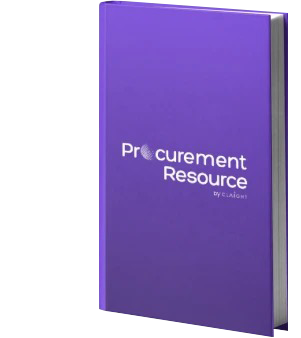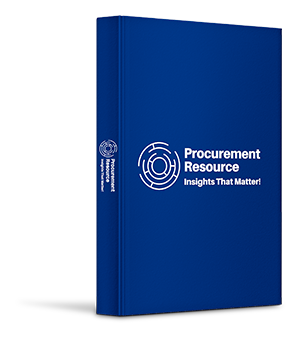Reports

Global Plant Equipment Market: Country Overview; Value Chain Analysis; Production Process; Trade Analysis; Market Dynamics: Drivers & Constraints, Industry Events, Innovations & Trends, SWOT Analysis; Porter’s Five Forces; Industry Best Practices: Sourcing Strategy, Procurement Model, Contract Structure, Negotiation Levers, Key Factors Influencing the Quotation; Key Supplier Analysis, 2024-2032
Plant Equipment Industry Report by Regional Category Spend, Price Analysis, Key Demand, and Price Indicators, and Best Buying Practices
The global Plant Equipment market reached a value of about USD 144 billion in 2021. The industry is projected to grow at a CAGR of around 6% in the forecast period of 2022-2027 to reach a value of about USD 205 billion by 2027.
The global Plant Equipment industry report gives a comprehensive analysis of the industry, including key segments, trends, drivers, restraints, the competitive landscape, and other essential market aspects. The increasing need for the equipment in industries to cut costs, increase productivity and reduce labour costs is driving the market. In the industry report, the key demand indicator is the highest category spender by region—Asia Pacific.
Plant Equipment: Industry Definition and Segmentation
Plant equipment is mechanical machinery employed as part of a process operation or combination of process operations that does not cause a change in the material or an article, such as conveyors, elevators, feeders, or weighers. It moves, stores, controls, and protects materials, commodities, and products during the manufacturing, distribution, consumption, and disposal processes. The Plant Equipment industry report comprises segments by type (Forklifts, Cranes, Small Loaders) and region (North America, Europe, Asia Pacific, the Middle East, Africa, and South America).
The Asia Pacific Region is Driving the Growth of the Industry
The Asia Pacific holds the largest share in the market as China and India are expected to provide a plethora of options, allowing OEMs to access a broader range of end-users. The fast use of e-commerce services fueled regional growth, boosting equipment purchases. The rise can be ascribed to manufacturers' increasing interest in industrial automation. Furthermore, forklifts aid in the streamlining of supply chain distribution operations and the operational efficiency and workflow of manufacturing processes.
The market is driven by the need for machinery in the manufacturing process. The commodities assist in improving the efficiency of product handling, management, storage, and transportation. This equipment helps to ensure that goods are circulated swiftly, smoothly, and efficiently during the production process. As a result, the following properties of the products are driving the market's expansion. Furthermore, growing government initiatives to promote infrastructural activities by building and upgrading new airports, train networks, seaports, and power plants is furthering the equipment's demand, thus resulting in increased demand.
However, the high cost of the equipment is likely to hamper the market growth.
Best Procurement Practices
The global Plant Equipment industry report by Procurement Resource gives an in-depth analysis of the best buying practices followed by major global Plant Equipment regions, such as engagement models, contract terms, and buyer and supplier negotiation levers.
Category Management Studies
Forklifts, Cranes, and Small Loaders are the major types of items in the industry. A forklift is a motorised industrial truck that lifts and transports objects over short distances. A crane is equipment that can raise and lower goods and move them. It is fitted with a hoist rope, wire ropes or chains, and sheaves. It is mainly used to lift big objects and carry them to different locations. A loader is a construction machine that moves or loads materials such as dirt, rock, sand, demolition waste, and other materials into or onto another type of machinery.
The rise in E-Commerce Sector, Further Driving the Procurement of Plant Equipment
The industry is being propelled by the increased need for automation and modernisation in industrial methods to make the manufacturing process easier and more cost-effective is driving the worldwide material handling equipment market. These solutions provide a cost-effective, process-efficient, and accurate way of transferring items quickly between manufacturing facilities and warehouses, resulting in increased demand and assisting industry growth. Also, the expansion of the aviation and e-commerce sectors, the desire for supply chain transparency and flexibility in warehouse activities, and the increased demand for better storage and transportation of products in warehouses contribute to the industry's growth. It ensures higher productivity by optimising logistics in warehouses and industrial plants.
The regional markets for the industry can be divided into North America, South America, Europe, the Middle East and Africa, and the Asia Pacific.
Key Industry Players Mentioned in the Plant Equipment Industry Report
- Toyota Industries Corporation
- KION Group AG
- The Liebherr Group
- Konecranes Oyj
- Sany Heavy Industry Co., Ltd
Market Landscape
The market is a highly consolidated one that is characterised by fierce rivalry. Major players plan to use organic and inorganic ways to maintain the competition as an effective growth strategy. Key suppliers are also focusing on mergers and acquisitions to expand their geographic reach and boost their market presence.
Key Initiatives by Companies
- Toyota Material Handling, a subsidiary of Toyota Industries Corporation, introduced Mole & Mouse Automated Guided Carts in April 2021. (AGCs). Customers should be able to automate repetitive operational operations in assembly lines, distribution centres, warehouses, and manufacturing facilities with the product. Similarly, Vanderlande Industries B.V, a logistics process automation company, launched HOME PICK, a goods-to-person (GTP) picking system, in July 2020. The product adds to the company's automated storage and retrieval system (AS/RS) and allows customers to place online supermarket orders.
- Compact wheel loaders from the Liebherr Group are fitted with innovative assisting systems and joystick steering for simple operation.
1. Executive Summary
2. Plant Equipment Industry Snapshot
2.1. Plant Equipment Market Outlook
2.2. Plant Equipment Industry Analysis by Type
2.2.1. Fork Lifts
2.2.2. Cranes
2.2.3. Small Loaders
2.3. Regional Overview
2.3.1. North America
2.3.2. Europe
2.3.3. Asia Pacific
2.3.4. Latin America
2.3.5. Middle East & Africa
3. Impact of Recent Events
4. Plant Equipment Value Chain Analysis
5. Plant Equipment Production Process
6. Trade Analysis
7. Major Risk Factors in Sourcing
8. Plant Equipment Cost Structure
9. Plant Equipment Price Analysis
10. Key Demand Indicator Analysis
11. Key Price Indicator Analysis
12. Plant Equipment Market Dynamics
12.1. Drivers & Constraints
12.2. Industry Events
12.3. Innovations & Trends
12.4. SWOT Analysis
12.5. Porter’s Five Forces
12.5.1. Buyer Power
12.5.2. Supplier Power
12.5.3. Threat of New entrants
12.5.4. Threat of Substitutes
12.5.5. Industry Rivalry
13. Industry Best Practices
13.1. Sourcing Strategy
13.2. Procurement Model
13.3. Contract Structure
13.4. Negotiation Levers
13.5. Pricing Model
13.6. Key Factors Influencing the Quotation
14. Key Supplier Analysis
14.1. Toyota Industries Corporation
14.2. KION Group AG
14.3. The Liebherr Group
14.4. Konecranes Oyj
14.5. Sany Heavy Industry Co., Ltd
The global Plant Equipment market size was valued at USD 144 billion in 2021.
As per the product type provided, the Forklifts segment is anticipated to lead the market between the period 2022 – and 2027.
The significant demand for the equipment to increase productivity is one of the essential drivers of the Plant Equipment market growth.
Toyota Industries Corporation, KION Group, Liebherr Group, Kone Cranes, and Sany Heavy Industry Co., Ltd are some of the key companies in the market.
The Asia Pacific region of the Plant Equipment industry holds a significant share in the market.
The global Plant Equipment market attained a value of USD 144 billion in 2021, driven by the rising need for machinery in the manufacturing process. The commodities assist in improving the efficiency of product handling, management, storage, and transportation and help ensure that goods are circulated swiftly, smoothly, and efficiently during the production process. As a result, the following properties of the products are driving the market's expansion. Facilitated by the expanding e-commerce segment, the market is anticipated to observe further progress in the forecast period of 2022-2027, growing at a CAGR of 6%. The market is projected to reach USD 205 billion by 2027. Some of the leading players in the industry are Toyota Industries Corporation, KION Group, Liebherr Group, Kone Cranes, and Sany Heavy Industry Co., Ltd.
Procurement Resources' detailed research approach explores deep into the industry, encompassing the macro and micro aspects of the industry. Its team of experts uses a combination of cutting-edge analytical tools and their expertise, thus, delivering its customers with market insights that are accurate and actionable and help them remain ahead of their competition.
Compare & Choose the Right Report Version for You
RIGHT PEOPLE
At Procurement Resource our analysts are selected after they are assessed thoroughly on having required qualities so that they can work effectively and productively and are able to execute projects based on the expectations shared by our clients. Our team is hence, technically exceptional, strategic, pragmatic, well experienced and competent.
RIGHT METHODOLOGY
We understand the cruciality of high-quality assessments that are important for our clients to take timely decisions and plan strategically. We have been continuously upgrading our tools and resources over the past years to become useful partners for our clientele. Our research methods are supported by most recent technology, our trusted and verified databases that are modified as per the needs help us serve our clients effectively every time and puts them ahead of their competitors.
RIGHT PRICE
Our team provides a detailed, high quality and deeply researched evaluations in competitive prices, that are unmatchable, and demonstrates our understanding of our client’s resource composition. These reports support our clientele make important procurement and supply chains choices that further helps them to place themselves ahead of their counterparts. We also offer attractive discounts or rebates on our forth coming reports.
RIGHT SUPPORT
Our vision is to enable our clients with superior quality market assessment and actionable evaluations to assist them with taking timely and right decisions. We are always ready to deliver our clients with maximum results by delivering them with customised suggestions to meet their exact needs within the specified timeline and help them understand the market dynamics in a better way.

Global HEOR Service Market: Size, Trend, Analysis and Forecast 2024-2032
The global HEOR market reached a value of about USD 1364.3 million in 2021. The industry is further expected to grow at a CAGR of about 12.81% in the forecast period of 2022-2027 to reach a value of around USD 2779.2 million by 2027.

Global Artificial Intelligence Market: Size, Trend, Analysis and Forecast 2024-2032
The global Artificial Intelligence Market reached a value of about USD 192 Billion in 2021. The industry is projected to grow at a CAGR of around 23% in the forecast period of 2022-2027 to reach a value of about USD 664.86 Billion by 2027.

Global Nutmeg Market: Size, Trend, Analysis and Forecast 2024-2032
The global nutmeg market reached a value of about 134 thousand tonnes in 2021. The industry is further expected to grow at a CAGR of about 4.5% in the forecast period of 2022-2027 to reach a value of around 167 thousand tonnes by 2027.
